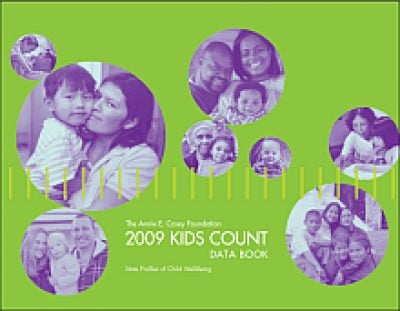Improvement for Teens
Teenagers showed positive improvement in two areas. From 2000 to 2006, the teen birth rate dropped by 13%, and from 2000 to 2007, the high school dropout rate among teens ages 16 to 19 declined from 11% to 6%.

The KIDS COUNT Data Book is an annual publication that assesses child well-being nationally and across the 50 states. The 2009 report begins with an essay, “Counting What Counts: Taking Results Seriously for Vulnerable Children and Families,” which articulates the case for using data-driven policymaking to improve results for children. Acknowledging that some progress has been made, the essay nonetheless urgently calls for leaders at all levels of government to create much more robust systems of data collection and analysis to measure child and family well-being as well as policy and program effectiveness. Particularly in times of economic crisis and fiscal constraint, high-quality information is essential to ensure sound and efficacious investments for children and families in need.
The remainder of the report provides national and state data on 10 indicators that reflect a range of factors affecting child well-being, particularly health, adequacy of income, and educational attainment. Based on a composite index of the 10 indicators, the three highest ranked states for child-being overall were New Hampshire, Minnesota and Utah; the three lowest ranked states were Mississippi, Louisiana and Alabama. At the national level, child well-being stagnated since 2000 after improving in the late 1990s. Due to time lags in data availability, the findings do not capture the effects of the economic downturn.
From 1994 to 2000, child poverty fell by a dramatic 30% but then increased by 6% between 2000 and 2007. In 2007, more than 13 million children were living in poverty nationally. Between 2000 and 2007, the percent of children living in single-parent families increased slightly. On the positive side, children made gains in the area of health and safety; the mortality rate declined for all age groups of children between 2000 and 2006. But during the same period, the percent of low-birthweight babies increased.